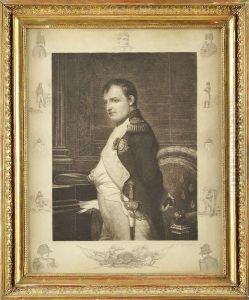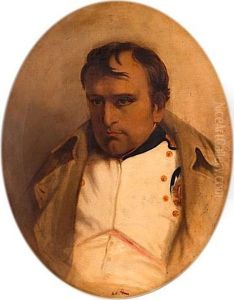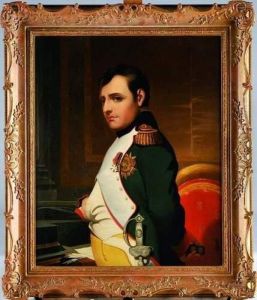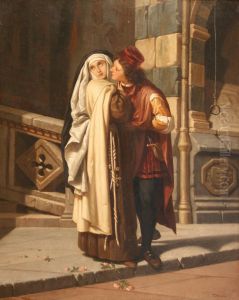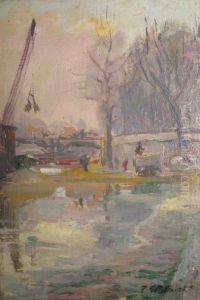Paul Charles Delaroche Paintings
Paul Charles Delaroche, a prominent French painter of the 19th century, was born on July 17, 1797, in Paris. His full name was Hippolyte Delaroche, but he chose to go by Paul. He hailed from a family with a strong background in the arts; his father was an art expert or 'expert art', his uncle was a curator of the Cabinet des Estampes, a collection of prints and drawings, at the Bibliothèque Nationale, and his brother, Jules-Hippolyte Delaroche, also became a painter.
Delaroche studied at the École des Beaux-Arts in Paris and was a student of Antoine-Jean Gros, a respected painter of his time. He soon developed a style characterized by a semblance of historical accuracy combined with a dramatic, theatrical approach to painting. Delaroche gained fame for his works that often depicted scenes from English and French history with emotional intensity and a fine attention to detail.
The artist's early works, such as 'Joan of Arc in Prison' (1824), already showed his interest in historical subjects and his capacity to evoke empathy through his depictions. However, his breakthrough came with the painting 'The Children of Edward' (1830), which portrayed the murdered sons of Edward IV of England. His fame was further cemented with 'The Execution of Lady Jane Grey' (1833), now held in the National Gallery in London. This painting exemplifies Delaroche's dramatization of historical events—it became his most famous work, captivating audiences with its poignant representation of the young queen's execution.
Delaroche's approach to history painting was unique for his time. He strived to create a sense of authenticity by meticulously researching the details of the events he painted, yet he did not hesitate to manipulate historical facts for dramatic effect. This blend of accuracy and drama made his work immensely popular with the public, although it sometimes drew criticism from purists who valued strict historical representation.
Delaroche also had a considerable impact as a teacher. He taught at the École des Beaux-Arts where he influenced a generation of artists, including Jean-Léon Gérôme. Throughout his career, Delaroche exhibited his works at the Paris Salon, where he was well-received and won several medals.
The artist's later years were marked by personal tragedy when his wife, Louise Vernet, the daughter of the painter Horace Vernet, passed away in 1845. This event profoundly affected Delaroche, and his output diminished significantly afterward. He died on November 4, 1856, in Paris, leaving behind a legacy that bridged the Neoclassical and Romantic schools of painting, influencing the development of academic art in France and beyond.
